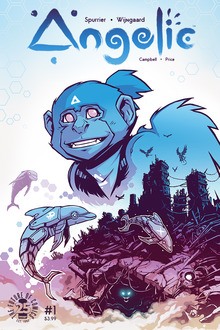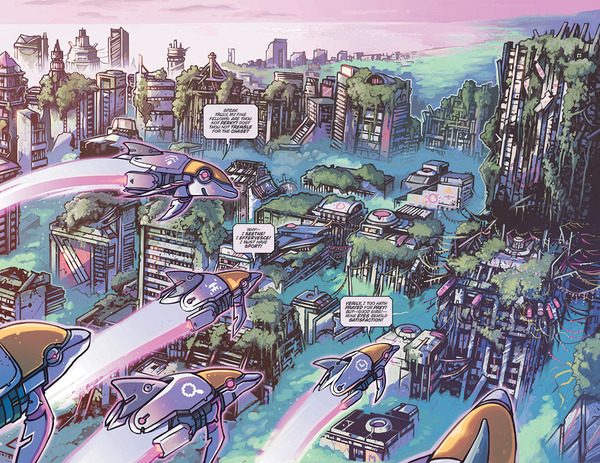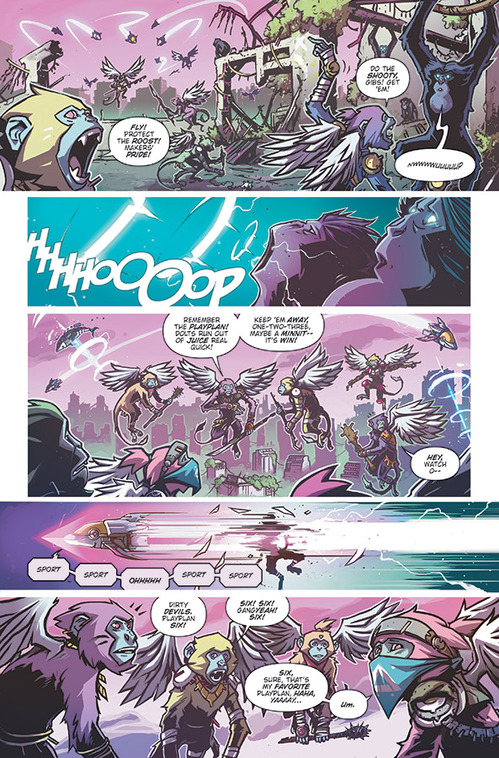Angelic‘s Si Spurrier and Caspar Wijngaard On God, Flying Monkeys & Haunted Houses
Main Art by Caspar Wijngaard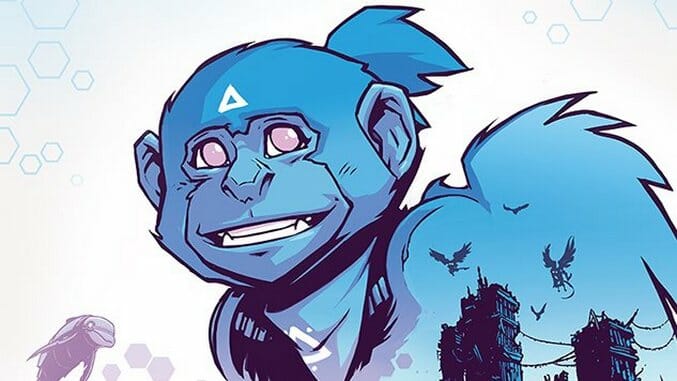
You should ask Simon Spurrier about the time he played chicken with ghosts. If you have the time—and you need to make sure you do, because it’s not really a story about ghosts, but about God—he’ll bring up a recent overnight stay at a haunted old mansion, one he went to with some friends, ostensibly for fun, but maybe for something more.
“It was supposed to be one of the most frightening experiences of my life,” Spurrier says. “One night I got up and went and stood in the darkness in the middle of this fucking Tudor mansion, and I should’ve been scared. But I thought if something happened, that would be pretty exceptional. You know? That’s something—we should all want proof that there is some secondary level of reality that we’re not able to access, and that’s what people of faith are constantly full of, and I haven’t known about that. And it disappoints me.”
Spurrier is an atheist, but he doesn’t seem particularly happy about it. Describing himself as an “annoyed, disappointed cynic” when it comes to spiritual matters, Spurrier’s work has turned to contemplate religion in rather direct ways of late—his BOOM! Studios series Godshaper with artist Jonas Goonface is about a mid-20th Century version of Earth where everyone has a personal god and worship becomes currency.
Today, though, we’re talking about his other god-adjacent book, the one about flying monkeys and cyborg dolphins at war. Angelic is a new ongoing series, geared towards young-adult readers, about Qora, a young flying monkey—Monk in her people’s parlance—who wants to explore a beautiful and weird post-apocalyptic Earth that may or may not resemble the one you know now. Only Qora can’t do that, because Monks like her eventually have a role to fulfill, one imposed by her people’s religion. So what happens when she says no?
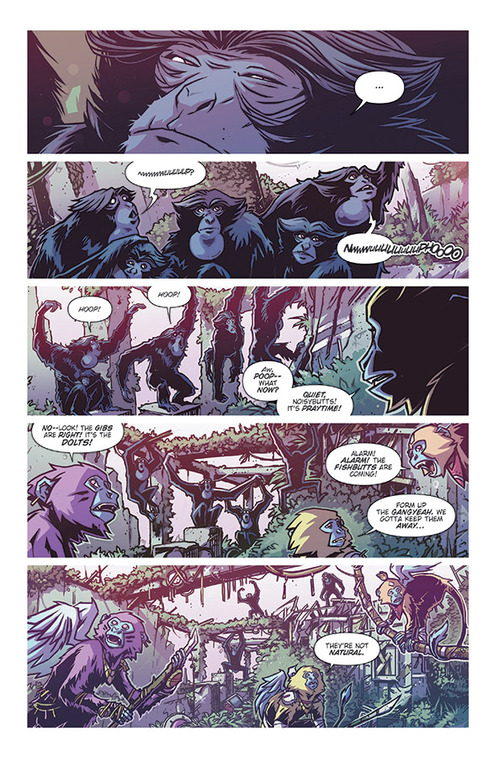
Angelic #1 Interior Art by Caspar Wijngaard
Coming in September, Angelic is Spurrier’s Image Comics follow-up to Cry Havoc. The upcoming series teams him with Limbo artist Caspar Wijngaard for what they both hope is a Pixar-esque fable that’s friendly enough for younger readers, but weighty enough for older ones. As far as the broad strokes go, it’s a pretty straightforward story about a girl who runs off and has adventures, learning that the world is far more complex than she was led to believe. Get into the specifics, though, and things get heavy.
The Monks have formed a strict religious society built around the remnants of human society, building out arcane and sometimes troubling rituals—there’s a mandate of arranged marital relationships that’ll make you do a double-take—out of naive reverence for these things they don’t understand.
“[The Monks are] kind of like the Lost Boys in Peter Pan,” says Wijngaard. “They’ve taken something really serious and just adapted it into their way of living. They’re playing grown-up while the grown-ups are away. They can be very cruel—it’s like pulling the wings off a beetle. There’s no thought, they’re just like, it’s a bug. And these apes are kind of the same way.”
